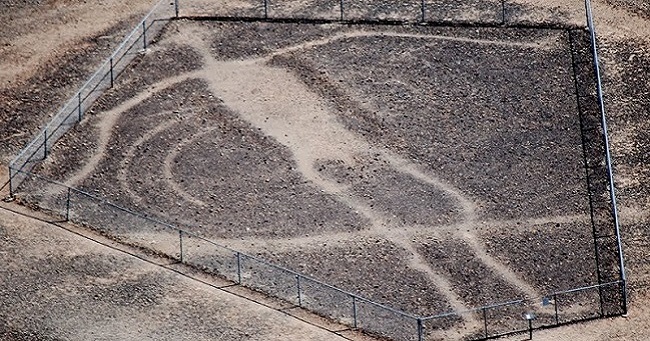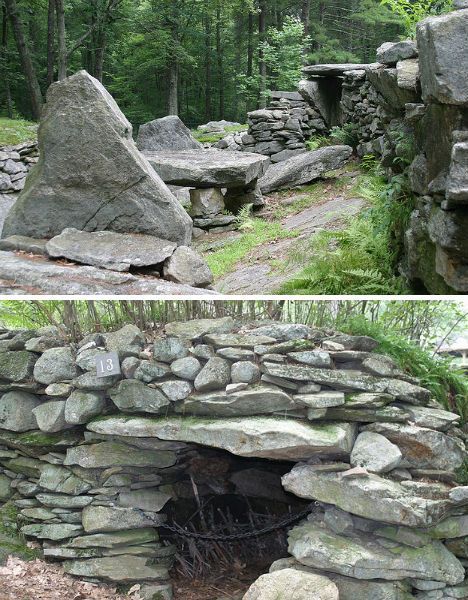


Even as you may have read about several geological and manmade mysteries existing around the world, did you know that America itself has its fair share of mysterious archaeological mysteries too? The problem is that we are so busy reading about the amazing places in the world that we tend not to realize the amazing and mysterious places lying before our very eyes. Although The United States can be considered fairly recent in terms of world archaeological mysteries, it does have a number of ancient ruins and landmarks that are as intriguing as the best in the world. Take a look at 10 archaeological mysteries of the United States.
Regarded as the American Stonehenge, Mystery Hill in Salem is similar in social concepts but bears no physical resemblance to the English Megalith. Mystery Hill is a complex of stone structures and artificial caves dating back to the 17th century. The exact date cannot be determined due to damages done by a landowner in the 1930 who thought the site was the ruins of a 7th century Irish monastery. The site attracts a number of visitors and has also been used as a setting for an episode of the X-files.

Image Source: www.pinimg.com
Archaeologists are of the opinion that the ruins of Casa Grande in Arizona dated back to the 13th century when builders used adobe. The entire complex was assumed to be made from adobe including a ball court. The nature of the four story central building is also yet to be determined whether it was a guard tower, a place of worship or a grain silo. The site seemed to have been abandoned long after the nearby Hopi Indians moved and much before Columbus stumbled upon America. Today the entire ruins are a national park under federal protection.
Image Source: www.nps.gov
The Blythe Intaglios are mysterious geoglyphs of giant figures etched into the Californian Desert dating back between 450 -2000 years ago. The mysterious and intriguing signs are similar to those found in Peru and the largest is near 170 feet long. The amazing fact about these giant signs is that they actually escaped the notice of Californian settlers till 1930 when a pilot flying overhead spotted them from the air. The most likely creators of the site were Mojave Indians but archeologists have no idea how the Indians could have created them and what was their purpose.
Image Source: www.pinimg.com
The Judaculla rock has been constantly used by the Cherokees as their own personal billboard. There are an umpteen number of petroglyphs etched into the soapstone rock making it difficult for archaeologists to decipher how many there are. The Boulder also has seven largest grooves believed to be the footprint of a mythical legendary giant. Archaeologists, however, attribute the grooves to ancient masons mining the soapstone to make bowls. The Cherokee still view the stone as a religious artifact.
Image Source: www.thomaslegion.net
Medicine wheel monuments still remain scattered around North America. These structures are stones arranged in a circular shape and are believed to be sacred among tribes across the great Northern plains. The biggest, however, is Wyoming’s Big Horn Medicine Wheel which is 75 feet in diameter. It was Astronomer John Eddy who noticed in 1970 that the spokes of the wheel pinpoint the direction of the sunrise on different solstices and was of the opinion that the site was an ancient observatory.
Image Source: www.theclio.com
This is another petroglyph boulder similar to the Judaculla Rock but no one knows who made it. Scholars attribute the creation of the Dighton Rock to pre Columbian tribes. One of the markings resemble those on a similar rock in Vermont. There are other theories which suggest the rock was made by Phoenicians or Vikings. Dighton rock is a national artifact and housed in the museum at Dighton rock state park.
Image Source: www.wikimedia.org
This massive 1,300 foot artwork is shaped like a snake swallowing an egg. It was first noticed by European settlers in 1812 and was left undisturbed. The site was surveyed by the Smithsonian in 1840 and has been a subject of study ever since. The creation of the site is still a mystery although scholars feel it was created by pre Columbian tribes. It also could have been used as an observatory.
Image Source: www.pinimg.com
Known also as the east Bay Walls, the Berkley Mystery Walls are stone walls running in a rough path through the Bay of California all the way from Berkley to San Jose. No one knows how they got there and their purpose. The structures have gaps at intervals and at one point form ornamental spiral patterns. They were noticed by early Spanish settlers and the local Ohone Indians who reported seeing them. The Berkley walls still remain one of the biggest archaeological mysteries of the USA.
Image Source: www.sott.net
The Miami Circle was discovered recently in 1998. It was existing beneath a Florida Apartment complex and was discovered after the apartment was knocked down by a developer. The circle consisted of a circular pattern of holes in the limestone bedrock. Excavation at the site also revealed artifacts and tools similar to those used by the Tequesta People and dated back 3000 years old. The site is now owned by the Florida state and is protected from developers.
Image Source: www.miamibeach411.com
The intriguing Hemet Maze stone consists of a single carving and is a three-foot square with an intricate interlocking maze pattern. The mystery behind the Hemet stone is the swastika pattern which is a religious symbol found only in Hindu and Buddhist art. The rock was vandalized in the 20th century and is now visible only from a chain link fence. The Maze stone is among the biggest of archaeological mysteries in the USA and is yet to be accurately explained how it got there.
Image Source: www.pinimg.com